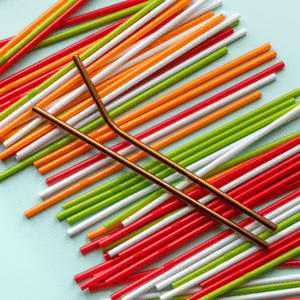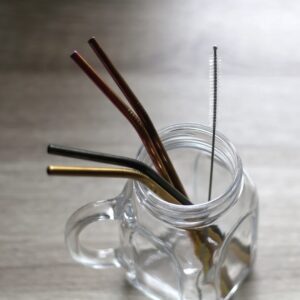How to care for your reusable straws to ensure they last longer.
Straw Maintenance: Tips for Longevity
Proper maintenance is key to a long-lasting straw. This post provides essential tips for keeping your straws in top shape.
Straw Maintenance: Tips for Longevity
Straws are simple yet incredibly useful tools that often go unnoticed in our daily lives. Whether you’re sipping on a refreshing iced coffee, enjoying a smoothie, or hydrating with water, straws make the experience more convenient and enjoyable. But did you know that with a little care, your reusable straws can last much longer and stay in tip-top shape? In this article, we’ll explore some practical and easy-to-follow tips for maintaining your straws so they remain clean, durable, and ready for use.
Why Straw Maintenance Matters
If you’ve made the switch to reusable straws—whether they’re stainless steel, silicone, bamboo, or glass—you’re already helping the environment by reducing single-use plastics. But to truly make the most of your sustainable choice, proper maintenance is key. Regular care not only keeps your straws hygienic but also extends their lifespan, saving you money in the long run. Plus, a clean straw ensures your beverages taste fresh and free of any unwanted residues.
So, let’s dive into some simple yet effective ways to care for your straws!
1. Rinse Immediately After Use
One of the easiest ways to keep your straws in great condition is to rinse them out right after use. This prevents liquids from drying and sticking inside the straw, which can make cleaning more difficult later. Simply run warm water through the straw for a few seconds to flush out any leftover drink residue.
If you’re on the go and can’t rinse your straw immediately, don’t worry! Just remember to do it as soon as you get home to avoid any buildup.
2. Invest in a Straw Cleaning Brush
A straw cleaning brush is a game-changer when it comes to maintaining reusable straws. These thin brushes are designed to fit perfectly inside straws, making it easy to scrub away any stubborn residue.
Here’s how to use one:
- Apply a small amount of dish soap to the brush.
- Insert the brush into the straw and gently scrub back and forth.
- Rinse thoroughly with warm water to remove soap and debris.
Straw cleaning brushes are affordable and widely available online or at kitchen supply stores. They’re a must-have tool for anyone who uses reusable straws regularly!
3. Soak for a Deep Clean
Every now and then, your straws might need a deeper clean—especially if you’ve been sipping on thicker beverages like smoothies or milkshakes. To give them a thorough refresh, try soaking them in warm, soapy water for about 10–15 minutes.
For an extra boost, you can add a splash of white vinegar or a sprinkle of baking soda to the water. Both are natural cleaning agents that help break down stubborn residue and eliminate odors. After soaking, use your straw brush to scrub the inside and rinse well.
4. Dishwasher Tips
Many reusable straws are dishwasher-safe, but it’s always a good idea to check the manufacturer’s guidelines first. If your straws are dishwasher-friendly:
- Place them in the utensil holder or a designated straw rack to keep them secure during the wash cycle.
- Use a gentle detergent and avoid high heat settings, especially for silicone or bamboo straws, as excessive heat can cause damage over time.
Even if you use a dishwasher, consider giving your straws an occasional manual scrub with a cleaning brush to ensure no residue is left behind.
5. Store Properly
Proper storage is an often-overlooked aspect of straw maintenance. After cleaning your straws, make sure they are completely dry before storing them. Moisture can lead to mold or unpleasant odors, especially in bamboo or silicone straws.
Here are some storage tips:
- Store straws in an upright container or holder to allow air circulation.
- Keep them in a clean, dry place away from heat or direct sunlight, which could warp certain materials like plastic or silicone.
- For travel, use a straw carrying case or pouch to keep them protected on the go.
6. Know Your Material
Different types of reusable straws require slightly different care routines based on their materials:
- Stainless Steel Straws: These are durable and rust-resistant but should be dried thoroughly after cleaning to prevent water spots.
- Silicone Straws: Soft and flexible, silicone straws are great for kids but can retain odors if not cleaned properly. Soaking them in vinegar water occasionally can help keep them fresh.
- Glass Straws: While elegant and easy to clean, glass straws are fragile and should be handled with care during washing and storage.
- Bamboo Straws: These eco-friendly options are biodegradable but prone to absorbing moisture. Avoid soaking them for too long and always let them air-dry completely before storing.
Understanding the unique needs of your straw material will help you tailor your maintenance routine for optimal results!
7. Replace When Necessary
Even with the best care, reusable straws won’t last forever. Over time, you may notice signs of wear and tear such as cracks, discoloration, or an unpleasant odor that won’t go away despite thorough cleaning. When this happens, it’s time to replace your straw to ensure your drinking experience remains safe and enjoyable.
If you’re using bamboo straws, keep in mind that they have a shorter lifespan compared to other materials due to their natural composition. Compost them responsibly when they’ve reached the end of their usability!
Final Thoughts
Taking care of your reusable straws doesn’t have to be complicated or time-consuming. With just a few simple habits—like rinsing after use, using a cleaning brush, and storing properly—you can keep your straws clean, fresh, and ready for countless drinks to come. Not only does this save you money by extending their lifespan, but it also reinforces your commitment to sustainable living by reducing waste.
So next time you sip through your favorite straw, give yourself a little pat on the back for taking good care of it—and for doing your part to protect our planet! Cheers!




